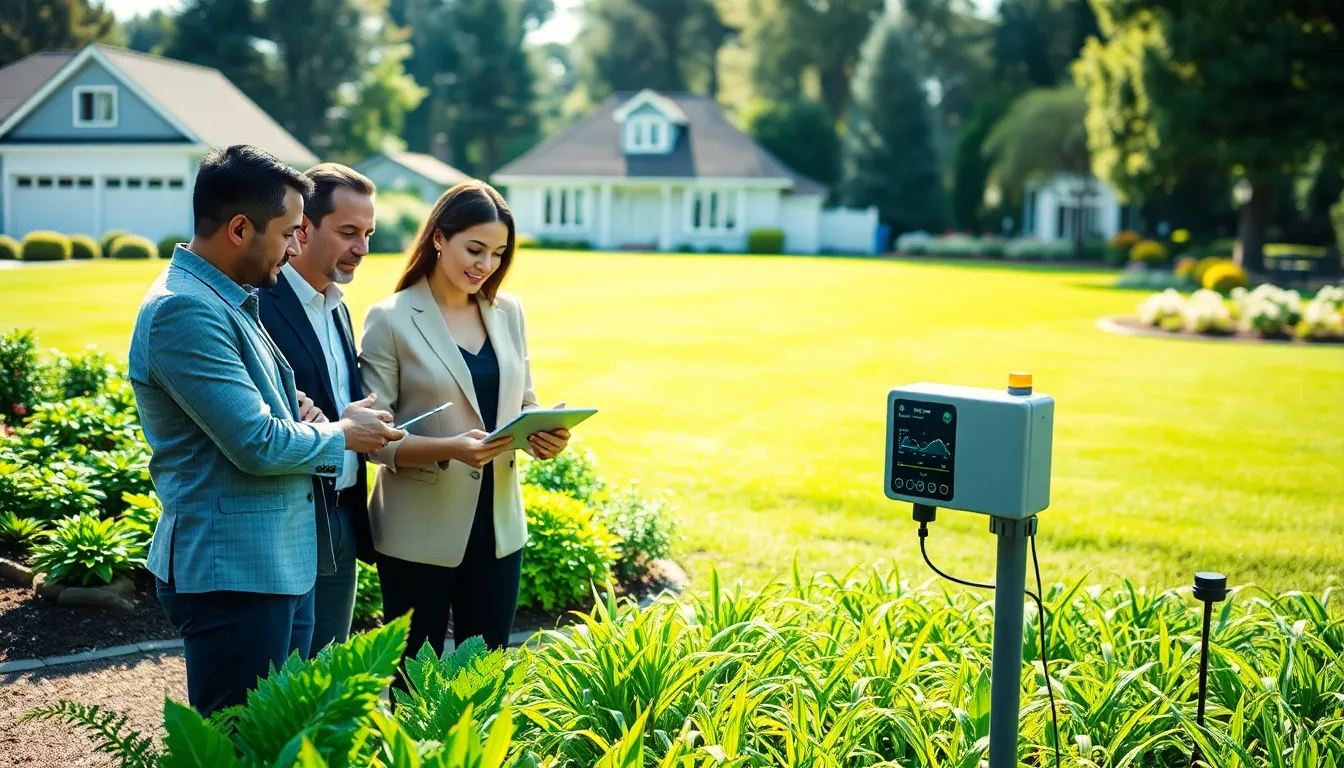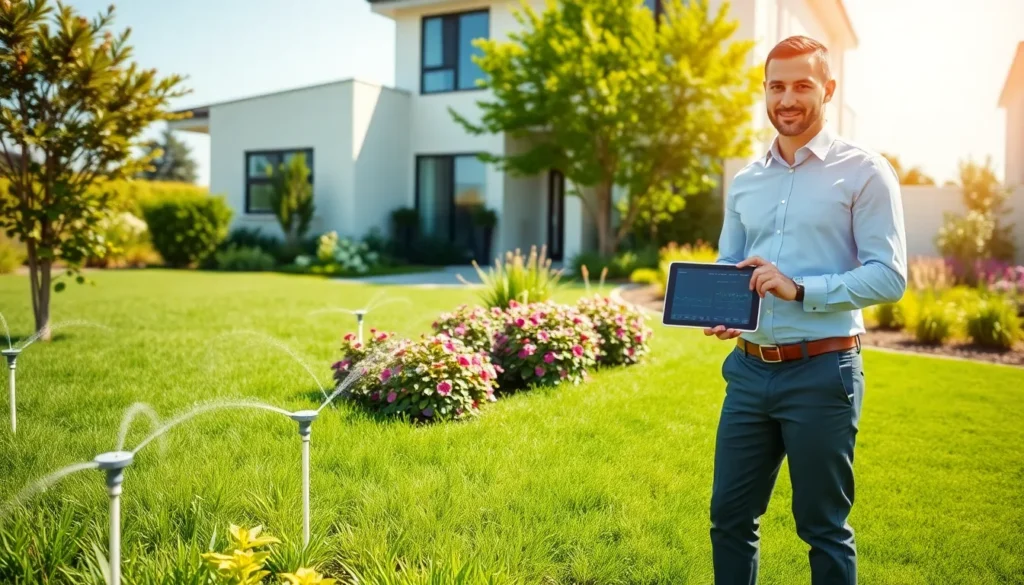Table of Contents
ToggleWhat if watering your lawn could be as easy as ordering a pizza? Enter smart irrigation systems, the game-changer in landscaping that ensures every drop counts and nobody is left thirsty. With a sprinkle of tech magic, homeowners and real estate developers alike are jumping on the bandwagon. Who wouldn’t want lush greenery without the hefty water bill? In a world where sustainability is all the rage, smart irrigation isn’t just a trend: it’s a necessity. Get ready to jump into the world of smart irrigation and uncover why it’s about to revolutionize how we green our surroundings.
Understanding Smart Irrigation Technology

Smart irrigation technology is revolutionizing traditional watering methods. It utilizes sensors, weather data, and advanced control systems to optimize water usage. Imagine a system that knows when it’s going to rain or when your plants are thirsty. Sounds like something out of a sci-fi movie, right? But this technology is very much real, leveraging irrigation scheduling to conserve water without compromising on lushness.
The magic starts with soil moisture sensors that gauge when your plants need a drink. These sensors feed information to a central control unit, which then adjusts watering schedules based on current conditions. In simpler terms, it’s like having a personal assistant for your garden, always on the lookout for what it needs.
Benefits of Smart Irrigation Systems
Adopting smart irrigation systems offers a plethora of benefits. One of the most striking advantages is water conservation. With traditional systems, overwatering was a common sin. Smart systems eliminate that mistake. They reduce water waste by up to 50%, which, let’s be honest, is a win-win for both wallets and the environment.
But wait, there’s more. These systems also enhance plant health. Proper watering schedules lead to healthier crops and landscapes, ensuring your investments aren’t wilting in the sun. Another perk? Reduced labor costs. No more manual checks, no more guesswork. Just program the settings and let the technology do its thing. Automation at its finest, wouldn’t you agree?
Key Components of Smart Irrigation Systems
To better understand how smart irrigation systems work, it’s essential to know their key components. First up are soil moisture sensors, these little guys gauge the moisture level in the soil, providing real-time feedback.
Next, we have weather stations. They gather data on temperature, precipitation, and humidity, all of which are crucial for determining when and how much to water. Then there’s the controller, the brain behind the operation: it interprets information from the sensors and weather data, adjusting the irrigation system accordingly.
Finally, emitters and pipes deliver water directly to plant roots. Together, these components create a seamless system designed for efficiency. It’s a marriage of technology and nature, working together to ensure that gardens thrive.
Integrating Smart Irrigation in Real Estate Developments
Real estate developments stand to benefit significantly from incorporating smart irrigation systems. Firstly, landscaping is often a major selling point for properties. A well-irrigated, lush landscape can set a home apart, appealing to potential buyers.
Also, smart irrigation systems can increase property value. As sustainability becomes a more significant concern for buyers, properties equipped with eco-friendly technologies are likely to attract higher offers. They not only save money on water bills but also appeal to the environmentally conscious market.
Incorporating these systems during development phases can reduce installation costs and integrate seamlessly with the overall design, making it a savvy decision for developers.
Case Studies: Successful Implementations
Several cities and real estate developments have embraced smart irrigation with impressive results. For instance, the city of San Diego implemented smart irrigation technology citywide, resulting in a water savings of 20%. This initiative not only retained lush public spaces but also demonstrated the city’s commitment to sustainability.
Another example is the Green City project in Texas, where developers installed a smart irrigation system that monitored weather patterns and adjusted irrigation schedules automatically. The project saw a 40% reduction in water usage, proving that it’s not just about creating pretty landscapes but also about responsible water management.
Future Trends in Smart Irrigation
The future of smart irrigation looks promising and exciting. The emergence of AI and machine learning is paving the way for even more efficient systems. Imagine systems that can learn from past watering cycles and automatically adjust their schedules based on evolving plant needs.
Also, developments in mobile technology mean homeowners can now operate their irrigation systems right from their smartphones. Remote monitoring and control will soon become the norm, offering convenience at your fingertips.
Finally, as more and more cities begin to focus on sustainable practices, smart irrigation will play a crucial role in urban planning and development. The integration of data analytics and IoT solutions will ensure that water conservation remains efficient and effective.



